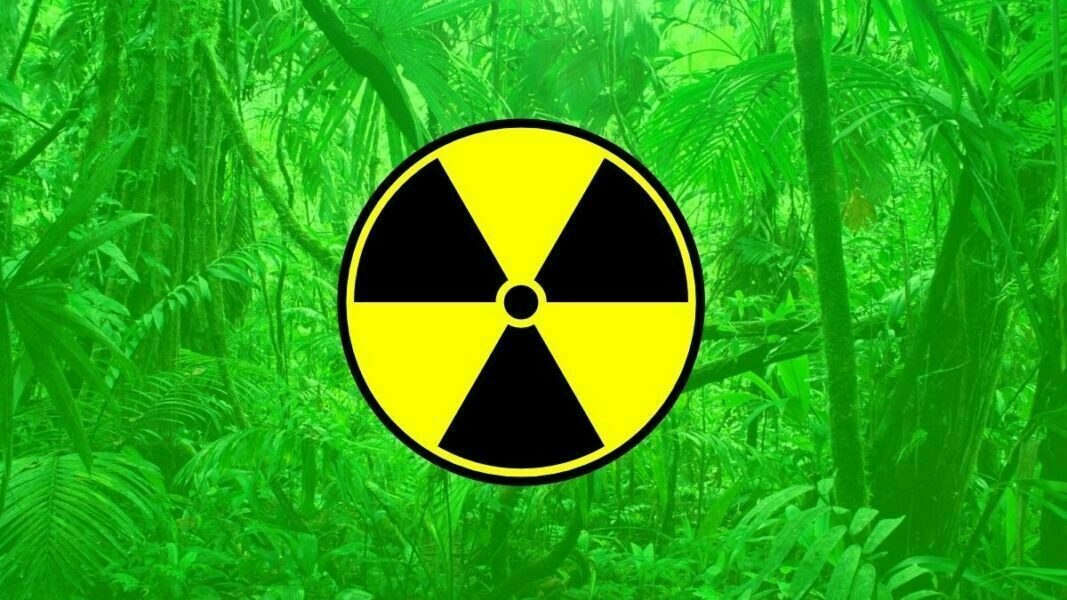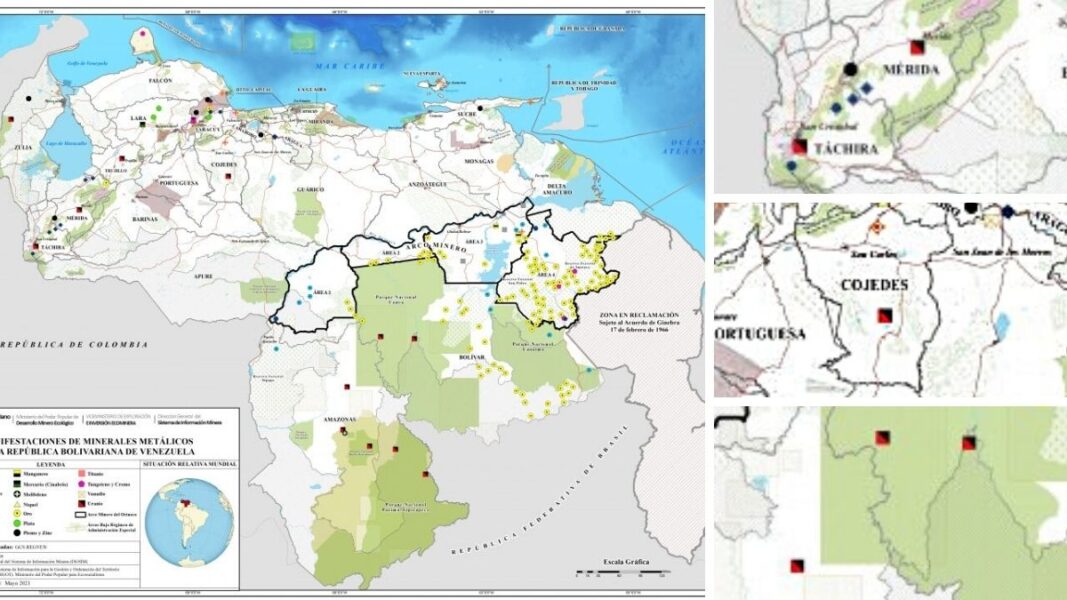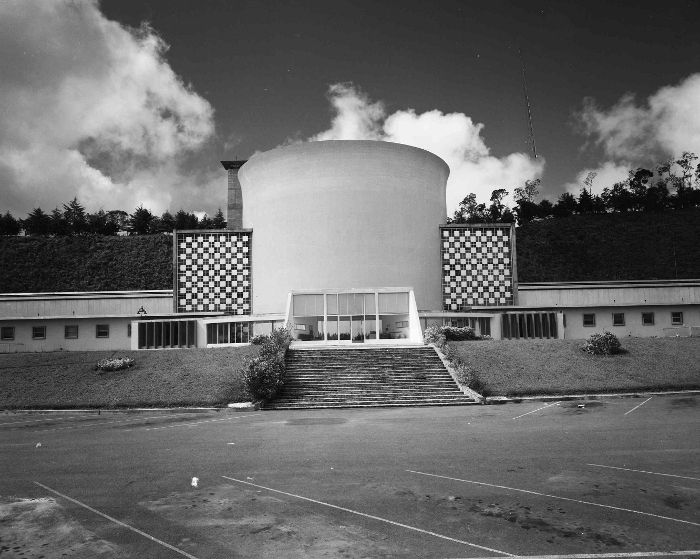
It is known that there are uranium deposits in Venezuelan territory. So far, at least 3 sites susceptible to exploitation have been detected in the states of Táchira, Cojedes and Amazonas. Although any plans for exploitation have been officially ruled out, in 2019 a study by the University of Carabobo detected high levels of radioactive activity.
Potential areas for uranium mining in Venezuela
Exploratory analyses carried out in the country highlight the zones with Uranium in El Baúl, Cojedes State, San Joaquín de Navay in Táchira State, Cerro Impacto in Bolívar State and the base of Roraima, also in Bolívar, which is part of the Venezuelan Amazon.
The most accessible areas to access the material would be those located in Táchira and Cojedes, which can be reached by road; the deposits in the Amazon would be accessed by air.
The radioactivity values found in the deposits of El Baúl in Cojedes, present a minimum value of 214 CPM (563Bq) up to 367 CPM (966Bq). Studies conducted by the University of Carabobo in 2019.

Radioactive activity in Venezuela, 2019
The University of Carabobo in Venezuela conducted an investigation of radioactive activity in the Galeras de El Baúl in Cojedes State, by searching for and locating samples of possible rocks with high levels of radioactivity.
The conclusion of the scientific studies detected a high proportion of the normal values of radioactive activity, so it was recommended to deepen the search in order to certify and account for possible reserves of radioactive minerals such as Uranium or Thorium.
This exploration area is located in the vicinity of Hato Piñero, a protected forest reserve area that has not had any human intervention that would distort the results of the research. This area is considered a strategic material reservoir with previous geomorphological studies.
The potential of the area with these minerals translates into their possible use for energy generation, nuclear medicine, pharmaceuticals and the food industry. This would result in the development of the country in these areas.
History of nuclear research in Venezuela
In 1952 the National Commission for Nuclear Affairs was created in Venezuela, which was renamed the National Council for the Development of the Nuclear Industry, and in 1998 the Directorate for Nuclear Affairs was created. These are the entities that will regulate atomic research in the country.
On November 22, 1960, the RV-1 was inaugurated, the first nuclear reactor in Latin America, located in the facilities of the Venezuelan Institute for Scientific Research (IVIC). This ambitious project was the result of an agreement between Venezuela and the United States signed in 1955 to develop atomic energy in the country for peaceful purposes, for which the U.S. government donated US$300,000.

The scientist who would turn Venezuela into a nuclear power
Humberto Fernández Morán was the man of science to whom we owe, among his outstanding contributions to scientific development in Venezuela, the foundation of the Instituto Venezolano de Investigaciones Científicas IVIC.
Fernández Morán was the coordinator of the installation of the first nuclear reactor, under the auspices of the government of Marcos Pérez Jiménez, which also had plans to continue building nuclear power plants in the Gran Sabana. All these projects were to be directed by Fernandez Moran for the creation of the first atomic energy development in Latin America.
Due to post-war regulations imposed for the use of atomic bombs, the nuclear reactor project would have to process innumerable permits to carry it out and delivery would take longer than expected.
After a few years of service the reactor was deactivated and the uranium rods removed by the International Atomic Energy Agency. In 1999, a gamma ray irradiation plant was installed in the old reactor facilities, to be used for the sterilization of medical supplies and foodstuffs.
The Nuclear Society of Venezuela
In Venezuela, the exploration of uranium deposits began in 1952 under the supervision of the National Commission for Nuclear Affairs, which prepared a national exploration plan from which a report was prepared with results on Venezuelan uranium deposits.
It was created with the purpose of bringing together professionals involved in nuclear development in the country, based on the correct development and implementation of the correct technologies for the implementation of this type of energy in Venezuela.
Among the activities carried out by the Nuclear Society was the first scientific and informative meeting held in 1982, which was responsible for carrying out a diagnosis of nuclear activity to be submitted to the national authorities.
Venezuela does not plan to mine uranium, 2009
In 2009, the then Venezuelan Minister of Energy and Petroleum Rafael Ramirez assured that the country has no plans to explore and explore possible Uranium reserves, only acknowledged Russia’s interest in developing a nuclear program in the medical and food areas.
He also rejected a possible collaboration with Iran to locate the mineral in the country, only highlighting the importance of the treaty with the entity that regulates atomic energy in Russia, which will provide nuclear technology for food preservation as a first step to later generate electricity.
Thorium and Uranium in Venezuela
Thorium is a chemical element represented by the number 90 and the symbol Th. It is extracted from the minerals thorite, thorianite and monazite. In its natural state it is a light-colored soft metal, and when heated it emits a white light.
Thorium has aroused interest as a nuclear fuel because it has a capacity of 40 times the amount of energy per unit mass and is more abundantly available in the earth’s crust than Uranium. Thorium is also used in more efficient ways as it has a higher energy capacity compared to natural uranium, which is only 0.7%.
Venezuela is among the countries with Thorium reserves which are estimated at 12 million tons worldwide. The technology to use thorium as a nuclear fuel is currently under development.
Sources
- How important is thorium in Venezuela compared to uranium? (2018, September 18). Nuclear Forum. https://www.foronuclear.org/descubre-la-energia-nuclear/preguntas-y-respuestas/sobre-combustible-nuclear/que-importancia-tiene-el-torio-en-venezuela-frente-al-uranio/
- (S/f-d). Albertonews.com. Retrieved March 26, 2022, from https://albertonews.com/nacionales/que-se-conoce-sobre-el-uranio-en-venezuela-seis-claves-sobre-su-presencia-y-radioactividad/.
- (S/f-c). Gob.ve. Retrieved March 26, 2022, from https://www.ivic.gob.ve/actualidad-6/galerias-60-aniversario/898-ivic/60-aniversario/3050-inauguracion-reactor-rv1.
- Montes, M. (2021). The scientist who would turn Venezuela into a nuclear power. Sputnik World. https://mundo.sputniknews.com/20210217/el-cientifico-que-convertiria-a-venezuela-en-una-potencia-nuclear-1107867141.html
- (S/f-b). Iaea.org. Retrieved March 26, 2022, from https://inis.iaea.org/collection/NCLCollectionStore/_Public/16/051/16051320.pdf?r=1.
- Cambero, F. A. (2009, September 27). INTERVIEW-Venezuela does not plan to exploit uranium yet: minister. Reuters. https://www.reuters.com/article/latinoamerica-energia-venezuela-uranio-idLTASIE58Q03W20090927
- (S/f). Redalyc.org. Retrieved March 26, 2022, from https://www.redalyc.org/journal/707/70760276012/html/.
This post is also available in:
![]() Español (Spanish)
Español (Spanish)

